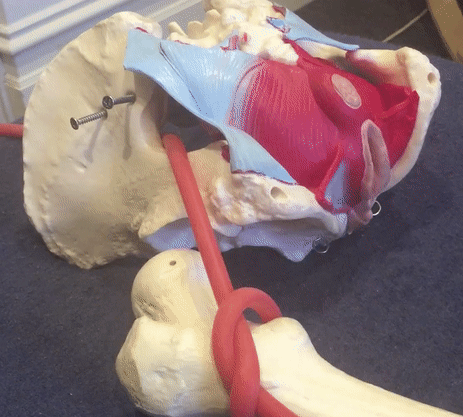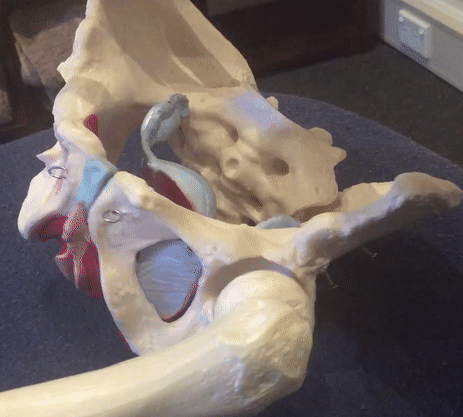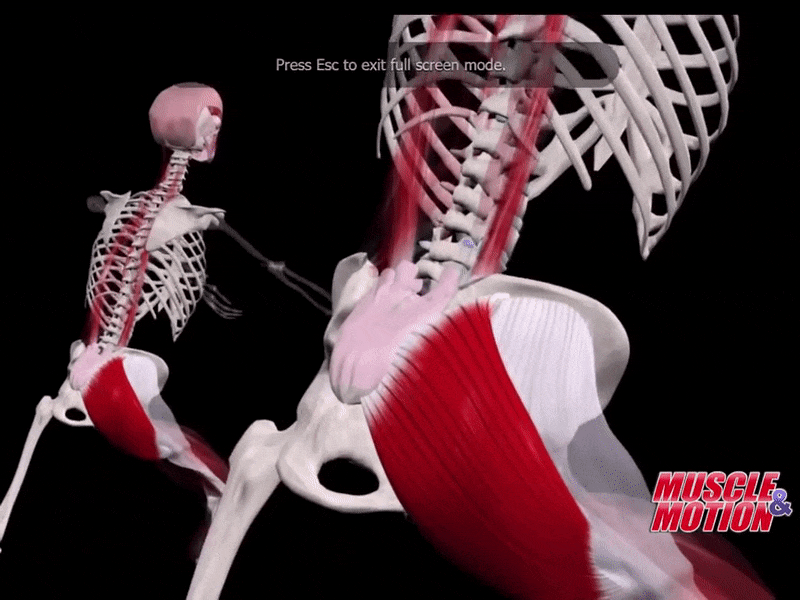
3.3 Causes of OP: Weak glutes
OP EXPLAINED
1. Osteitis Pubis: an introduction
1.1 Symptoms and Stages of Osteitis Pubis
1.2 OP Diagnosis guide
1.25 Should I get a MRI/CT/Xray scan for OP?
2.0 Overworked Adductors: The true cause of OP
2.1 Rest: The worst treatment for OP
2.2 OP mechanics in detail
3.0 Faulty firing patterns: Weaknesses that cause OP
3.1 The Deep Front Line
3.2 Causes of OP: Weak arches
3.3 Causes of OP: Weak glutes
3.4 Causes of OP: Poor core activation
3.5 Causes of OP: Dysfunctional pelvic floor and Sacroilliac Joint
3.6 Causes of OP: Dysfunctional oblique chains
3.7 Causes of OP: The balance and coordination system
Refresh your understanding:
-
Osteitis Pubis is caused when adductors are overworked over time.
-
Your personal biomechanics (the patterns that fire your muscles/move your joints) lead to the OP mechanics (hip drop, pronation, anterior pelvic tilt, locked SIJ and knocked knees) that cause OP.
-
Your personal biomechanics must be corrected to stop overloading your adductors.
-
The Deep Front Line (DFL) is the foundation of your body, responsible for the stability and alignment of your entire body. The DFL relies on 6 biomechanical/functional systems (arches, glutes, core, SIJ/Pelvic Floor, Oblique Chains, Balance).
-
Dysfunction/lack of coordination in and between these 6 systems leads to the poor OP mechanics that cause OP.
-
By maintaining good alignment (centre of gravity) the load/force of movement can be evenly distributed across the entire length of the DFL (and therefore the body) rather than being concentrated in the adductors.
GLUTES AND THE DFL: HELP STAYING ON THE TRACKS!


Staying aligned and stabilized within the ‘tracks’ of our COG/DFL is important. Our arch provides us with a strong, stable foundation to maintain our alignment within the DFL. The next step is safely stabilizing our hip securely into the socket.
The glutes live on the lateral (outside) of the hip whilst the adductors live on the medial (inside) side of the hip.

It’s the combination of both the glutes and adductors which keep the hip safely secure within its socket. In OP the glutes become lazy/dysfunctional, leaving most hip stabilizing work to those poor overworked adductors.
LAYERS OF THE GLUTES?
The femur is the longest bone in the body. Keeping the hip securely into the socket is a big job. Most people are familiar with their glute max, the most powerful muscle in the body, but there are actually 9 gluteal muscles, which is why your glutes curve your body!
The 9 glute muscles can be separated into 3 distinct groups each with their own unique role in keeping the hip in the socket. It’s the function of 8 other glute muscles that allows the glute max to function with 100% power!
THE PELVIC STABILISERS


The gluteus medius and gluteus minimus are two stabilizing muscles that live underneath the gluteus maximus (discussed later). The pelvic stabilisers play an important role in keeping your pelvis level when walking/running/changing direction.
Whenever you walk you lift one leg off the ground. With half your pelvis no longer grounded it would be easy for that side of the pelvis to dip towards the ground (hip drop) making it impossible to keep the hip securely stabilized within the socket! But the contraction of the pelvic stabilizers in conjunction with help from the DFL prevents this drop. The pelvis stays neutral.

With stabilizers firing, your pelvis does not ‘see-saw’ so excessive load isn’t on the adductors when the foot hits the ground.
No…. pilates bridges and clams won’t work
A quick google of ‘how to fix a hip drop’ will probably bring up suggestions for exercises like ‘clams’ and ‘bridges’. OP is in the coordination and timing of your muscular/fascial firing patterns. A clam will strengthen the gluteus medius muscle but it will do little to connect this strength to your arches or core. Your DFL will remain dormant and you will only succeed in creating another area of isolated muscular strength.
HIP STABILISERS: THE CROSSOVER STATION TO THE DFL


The deepest layer of glute muscles are the hip stabilisers (also called deep lateral/external rotators). The hip stabilisers are responsible for sucking the hip into the socket so it does not dislocate. They are also a part of the DFL. As you engage your hip stabilisers you pull your hips into the ‘rails’ of the DFL.

Hip stabilisers act as the DFL anchor/conduit or the crossover station where the power of the glute max and the stabilization of the hip and pelvic stabilisers is transferred and combined in the DFL.
THE GLUTEUS MAXIMUS: WHEN THE TRAIN IS ON THE TRACK YOU CAN PUSH THE THROTTLE!


The most important movement to human beings is hip extension. Hip extension is when you pull your leg behind you. This motion provides the explosiveness in running, the strength to lift objects off the ground out of a squat and the power to explode in the air when jumping!


Hence your body designed its most powerful muscle, the gluteus maximus, to complete its most important movement job – hip extension! Without hip extension our ancestors would have been caught by predators. They could never have moved stones or dragged back their prey. Without our glutes our body lacks force and power.
Glut max requires alignment!
Unfortunately most OP patients cannot generate power from their Gluteus Maximus. The glute max is extremely powerful and can actually throw you off balance when it fires. This is why the glute max will not fire unless you are in a balanced, stable position. It will only fire when stabilized within the safety of the DFL. This makes sense. If the train is veering off the tracks, this is not the time to hit the throttle. When your body is not balanced, aligned and stabilized within the DFL it simply refuses to fire the glute max….. period.
You can have the strongest glutes in the world but they’re still not going to fire if your body isn’t stable and balanced. This simply isn’t how your body works. (Unfortunately nothing about a clam or bridge improves your balance/stability).
COMPENSATION PATTERNS KILL


If your Glute Max is not firing you still need to create movement. For most OP patients this means compensation patterns. Swinging hips, chopping arms, they will attempt to create excessive movement and momentum to compensate for missing glute max power. Not only is this inadequate, this excessive movement will pull alignment farther away from the Deep Front Line.
And who is asked to help control this excessive movement… You guessed it, your adductors.
CONCLUSION: FEEL YOUR GLUTES, KNOW YOU’RE WINNING
The goal of the body is to maximize glute activation to use its strength to powerfully propel the body towards its goals safely.
The fact that it will not fire effectively unless your body is held in good alignment within the DFL is great news…
Because when you are performing your exercises you know you are nailing it when you can feel your glutes firing. In recovery your glutes will become your new best friend. Every time they fire it’s another enthusiastic, supportive thumbs up that you’re in your DFL and on the right track.
As the rehab exercises become more complex it becomes harder and harder to find your glutes in the movement, teaching you how to maintain alignment in challenging situations.
You will start replacing your adductor soreness with glute soreness and you should love it, because if your glutes are sore you know you are winning!
